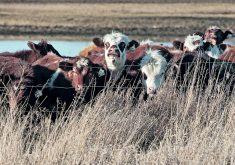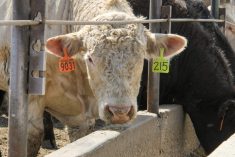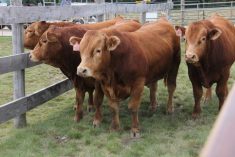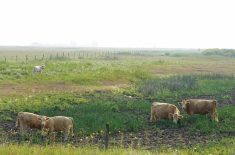Many of the Prairie livestock producers forced by drought to make “difficult herd management decisions” in the 2022 income tax year are now eligible to defer the taxable income from those decisions.
Federal Agriculture Minister Marie-Claude Bibeau on Tuesday released the initial list of designated regions in Alberta, Manitoba and Saskatchewan where livestock tax deferral has been authorized for 2022.
Those include most of southern Alberta up to around Stettler and Olds; nearby rural municipalities in western Saskatchewan; most of agricultural Manitoba; and some parts of west-central Saskatchewan southwest of Saskatoon (full list and map below).
Read Also
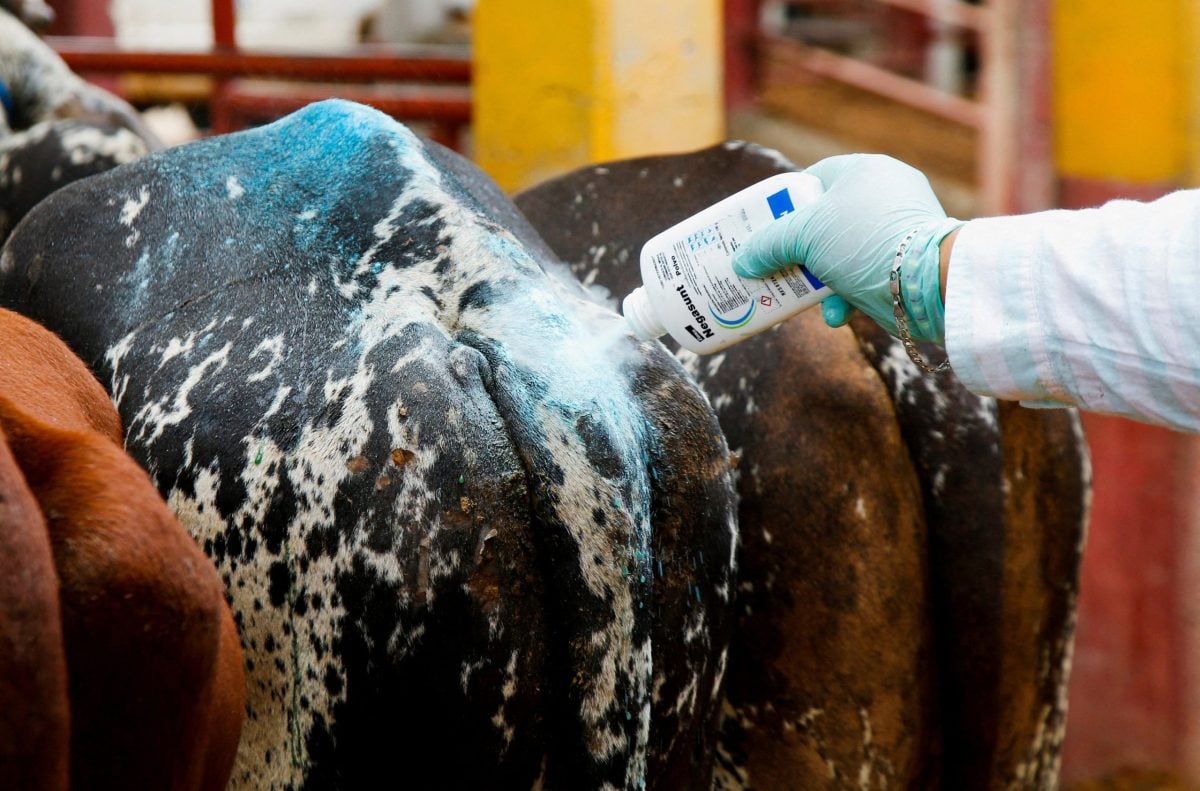
Mexico agriculture secretary says still no date for restarting cattle exports to U.S.
Mexican Agriculture Minister Julio Berdegue said on Wednesday that Mexico and the United States have not yet set a date to resume Mexican cattle exports amid an outbreak of the flesh-eating screwworm parasite.
Regions eligible so far were identified based on weather, climate and production data in consultation with industry and affected provinces, the federal agriculture department said Tuesday. Criteria include forage shortfalls of 50 per cent or more, whether caused by drought or excess moisture.
In areas designated for the deferral in a given tax year, eligible producers who had to cull breeding herds by at least 15 per cent may defer part of the income from those sales until their next non-designated tax year.
If the herd was cut by at least 15 per cent — but by less than 30 per cent — then 30 per cent of income from net sales can be deferred.
Where a producer reduced a breeding herd by 30 per cent or more, 90 per cent of income from net sales can be deferred.
Thus, in the 2023 tax year — or in the next tax year in which the designation is lifted off a specific municipality — the deferred taxable income from those sales can be at least partially offset by the cost of reacquiring breeding animals.
The ag department said Tuesday it would keep monitoring conditions across Canada to see if more designations are needed.
Some farm and ranch organizations had already been calling for deferral designations for the 2022 tax year to be made as soon as possible.
“Many areas of western Saskatchewan are still dealing with unprecedented drought, which is leading to herds of cattle being sold,” Scott Owens, a farmer in the western RM of Eldon and vice-president with the Agricultural Producers Association of Saskatchewan (APAS), said in such a statement in early June.
“If they haven’t already, many producers are running out of feed, and the pastures have not recovered from a lack of moisture last year and during the winter.”
By mid-November 2021, drought designations for the deferral for the 2021 tax year had reached all of Saskatchewan and northwestern Ontario, all of agricultural Alberta and Manitoba, and much of agricultural British Columbia. — Glacier FarmMedia Network
Initial list of designations, 2022
Alberta: Calgary, Taber; counties of Cardston, Cypress, Foothills, Forty Mile, Kneehill, Lethbridge, Newell, Paintearth, Pincher Creek, Rocky View, Starland, Stettler, Vulcan, Warner and Wheatland; the municipal district of Willow Creek; and “special areas” 2, 3 and 4.
Saskatchewan RMs: Antelope Park, Biggar, Buffalo, Chesterfield, Deer Forks, Enterprise, Eye Hill, Fertile Valley, Frontier, Grandview, Grass Lake, Happyland, Harris, Heart’s Hill, Kindersley, Maple Creek, Mariposa, Marriott, Milden, Milton, Monet, Montrose, Mountain View, Newcombe, Oakdale, Perdue, Pleasant Valley, Prairiedale, Progress, Reford, Reno, Rosemount, Round Valley, Snipe Lak, St. Andrews, Tramping Lake, Vanscoy and Winslow.
Manitoba: municipalities of Alonsa, Argyle, Armstrong, Bifrost-Riverton, Boissevain-Morton, Brenda-Waskada, Brokenhead, Cartier, Cartwright-Roblin, Clanwilliam-Erickson, Coldwell, Dauphin, De Salaberry, Deloraine-Winchester, Dufferin, Elton, Emerson-Franklin, Fisher, Gimli, Glenboro-South Cypress, Glenella-Lansdowne, Grahamdale, Grassland, Grey, Hanover, Harrison Park, Headingley, Killarney-Turtle Mountain, Lakeshore, Lorne, Louise, Macdonald, McCreary, Minto-Odanah, Montcalm, Morris, Norfolk-Treherne, North Cypress-Langford, North Norfolk, Oakland-Wawanesa, Oakview, Pembina, Portage la Prairie, Prairie Lakes, Rhineland, Ritchot, Riverdale, Rockwood, Roland, Rosedale, Rosser, Souris-Glenwood, Springfield, St. Andrews, St. Clements, St. François Xavier, St. Laurent, Stanley, Ste. Rose, Tache, Thompson, Victoria, West Interlake, West St. Paul, WestLake-Gladstone, Whitehead, Woodlands and Yellowhead; city of Winnipeg; Division No. 17, Unorganized; and Division No. 18, Unorganized (east part and west part).






